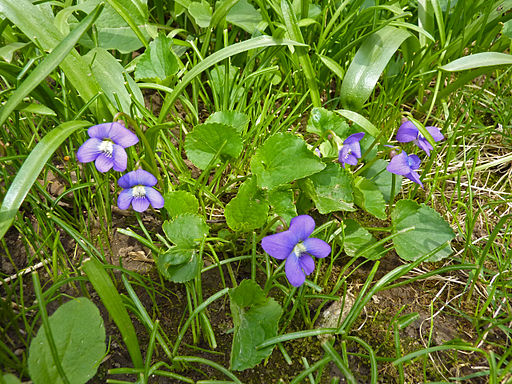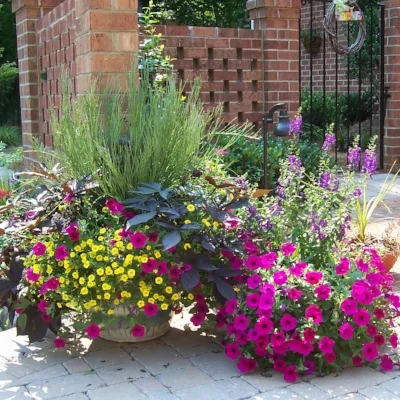Controlling Wild Violet Weeds in the Lawn
One of the most difficult weeds to control in the lawn is wild violet. This native plant may look cute and dainty, especially in the spring when it produces pretty purple flowers. But in reality it is an aggressive weed with an unusual flowering quirk that results in thick mats of leaves that can choke out your lawn.
Wild violets are very tough plants that tolerate drought. But the ideal condition for them is moist soil, which this year’s above average rainfall has provided. This has resulted in vigorous growth and spreading of this weed.
In spring, wild violets produce their well-known purple (or sometimes white, bicolored or speckled) flowers, which are often mowed off. But in summer violets can produce a different type of self-pollinating flower that stays below the leaves (or even underground) and produces seeds that are dropped in the surrounding area. These flowers will not be mowed off, allowing for a large amount of seeds to be spread. They also spread by underground stems. Using these two methods, they can eventually create dense colonies.
Wild violets can be controlled, but it does take some effort and repeat treatment. Fall is the ideal time to control wild violets as they will more readily move herbicides into the root system as they prepare for winter.
Due to their fleshy, energy storing roots, any non-selective herbicide you use must be systemic. Glyphosate (Roundup®) will work but may take 2-3 applications a few weeks apart. Non-selective herbicides will also kill any plant they contact, including grass, so protect surrounding areas with a shield of cardboard or use a brush to apply only to the violets.
Selective broadleaf weed herbicides must list wild violet on the label to be effective. Bonide Chickweed Clover& Oxalis Killer is an option, or a product containing dicamba and triclopyr, but again it may take several applications to completely eradicate established plants.
Non-selective herbicides will work, including Roundup and organic herbicides, but it takes repeated treatment to gain control as the roots can be difficult to kill.
After the existing plants in your lawn are controlled, you will need to use a pre-emergent herbicide in spring & fall to prevent the many seeds the violets have already spread from sprouting. Further suppression is gained by maintaining a thick, healthy lawn that prevents weeds from becoming established.

Here are the common ways your landscape is telling you it needs help.
Controlling fall and winter weeds is a constant battle. Here are some of the reasons control can be difficult.
New Garden Landscaping & Nursery feels that Boxwood Blight could have a major impact on landscapes containing boxwood in the near future. Here’s what you need to know about the disease.
Since fall is the time to plant spring blooming bulbs, here are the answers to some common questions about bulbs.
Don't panic, there are a few common (and benign) reasons that trees drop leaves in summer.
Ugh! What’s nastier than a sack of crawly caterpillars hanging from your trees? How about a dozen of ‘em?
Quick tips for avoiding the fungal disease Brown Patch in lawns
Blueberries make great container plants! Watch this video from our friends at Espoma for tips and see how easy it is to grow blueberries in containers.
Good container plantings require little maintenance aside from watering and can enhance your home through the spring, summer, and fall.
Unlike some other flowering plants, crapes will develop their flower buds on new growth.
This is a question we have been asked frequently this fall.
Where and why this is not bad advice, and where it’s a terrible idea.




















